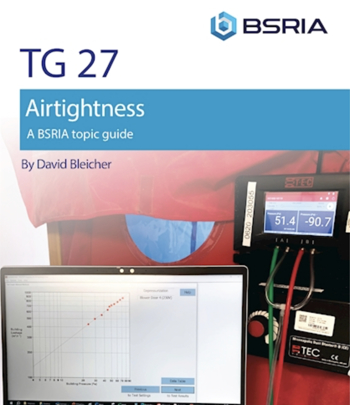Teamwork on construction sites
Contents |
[edit] Introductione
A general contractor faces many challenges on a building site. Teamwork on construction sites entails proper planning, definition of the goals and objectives, assignment of roles and responsibilities, and collaborative work processes.
Here is a look through the top 3 benefits of teamwork for general contractors:
[edit] Increased efficiency and productivity
Planning: The behavioural theories of management have proven that collaborative teamwork and an inclusive work environment increase the productivity of workers. Hence, construction projects bring together different consultants and contractors of different disciplines for the execution of a common goal. This necessitates, therefore, the application of teamwork in the sequencing and scheduling of works, coordination of tasks and allocation of resources.
Collaboration: Collaborative teamwork facilitates the achievement of the project objectives as per the specifications of the business owner and the stakeholders in a timely manner and within the budget. Moreover, efficiency on the construction site increases as a result of the collective contribution of diverse ideas in the brainstorming of methods of streamlining processes and mutually coming up with the best way of working.
Innovation: Additionally, it promotes innovation since the team members can learn from each other, share knowledge, obtain feedback and grow in their respective trades.
[edit] Enhanced construction safety and risk management
Teamwork also involves proper planning and management of risk and occupational hazards such as bodily injury and property damage. When contractors work together as a team, they identify risks and assign them to different parties. Members of the team are also accountable not only for their actions but also for the actions and safety of their colleagues.
Risk management and safety improve through the apportionment of general liability by the business owner and the general contractor to the other contractors. Furthermore, contractors are free to seek guidance on any concerns as pertains to the safety work done, instead of taking unnecessary risks and causing material and property damage as well as bodily injury for themselves and other contractors on site.
[edit] Fewer disputes
Teamwork promotes open communication channels among all the members of the team, and address the ideas and concerns of all the consultants, the general contractor, and the subcontractors with equal importance. This, therefore, reduces the possibility of claims since matters are managed and addressed before they occur and impact the project; and general liability is assigned to different members of the team.
Litigation: It also promotes a good working relationship between the team members, based on mutual respect and accountability. This reduces the chances of adversarial litigations in a bid to maintain friendships and cooperation. Additionally, teamwork offers a platform for brainstorming on complex issues thereby arriving at the best decisions.
Being prepared: Even with the best preparation and teamwork, things can go wrong. General contractors can find themselves facing issues or worse still, expensive litigation and costs.
A possible solution to this is to take out liability insurance cover. General Liability Insurance might be the best option when it comes to covering a business and its assets including staff or sole contractors. Some form of insurance is often a mandatory requirement in many countries and states. Contractors' all-risk insurance is an option as well as Contract works insurance or other forms that suit the specific case.
[edit] Related articles on Designing Buildings
- Building Users' Insurance Against Latent Defects.
- Contractors' all-risk insurance.
- Contract works insurance.
- Collateral warranties.
- Contract v tort.
- Defects.
- Defects liability period.
- Defective Premises - Liability and Measure of Damages.
- Defective Premises Act.
- Design and build.
- Design and build - pros and cons.
- Directors and officers insurance.
- Fitness for purpose.
- Flood insurance.
- Insurance for building design and construction.
- Insurance terminology.
- Integrated project insurance.
- JCT Clause 6.5.1 Insurance.
- Joint and several liability.
- Latent defects insurance.
- Legal indemnities.
- Making sure your builder has appropriate insurance.
- Professional Indemnity Insurance.
- Public liability insurance.
- Residual value insurance.
- Reasonable skill and care.
- Single project professional indemnity insurance
Featured articles and news
The UK's Modern Industrial Strategy: A 10 year plan
Previous consultation criticism, current key elements and general support with some persisting reservations.
Building Safety Regulator reforms
New roles, new staff and a new fast track service pave the way for a single construction regulator.
Architectural Technologist CPDs and Communications
CIAT CPD… and how you can do it!
Cooling centres and cool spaces
Managing extreme heat in cities by directing the public to places for heat stress relief and water sources.
Winter gardens: A brief history and warm variations
Extending the season with glass in different forms and terms.
Restoring Great Yarmouth's Winter Gardens
Transforming one of the least sustainable constructions imaginable.
Construction Skills Mission Board launch sector drive
Newly formed government and industry collaboration set strategy for recruiting an additional 100,000 construction workers a year.
New Architects Code comes into effect in September 2025
ARB Architects Code of Conduct and Practice available with ongoing consultation regarding guidance.
Welsh Skills Body (Medr) launches ambitious plan
The new skills body brings together funding and regulation of tertiary education and research for the devolved nation.
Paul Gandy FCIOB announced as next CIOB President
Former Tilbury Douglas CEO takes helm.
UK Infrastructure: A 10 Year Strategy. In brief with reactions
With the National Infrastructure and Service Transformation Authority (NISTA).
Ebenezer Howard: inventor of the garden city. Book review.
The Grenfell Tower fire, eight years on
A time to pause and reflect as Dubai tower block fire reported just before anniversary.
Airtightness Topic Guide BSRIA TG 27/2025
Explaining the basics of airtightness, what it is, why it's important, when it's required and how it's carried out.
Construction contract awards hit lowest point of 2025
Plummeting for second consecutive month, intensifying concerns for housing and infrastructure goals.
Understanding Mental Health in the Built Environment 2025
Examining the state of mental health in construction, shedding light on levels of stress, anxiety and depression.





















